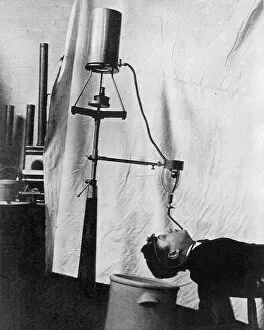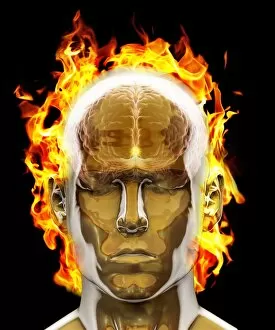Sleeplessness Collection
"Sleeplessness: A Battle Against the Restless Mind" In the late 19th century, water-induced rest was a popular remedy for sleeplessness
All Professionally Made to Order for Quick Shipping
"Sleeplessness: A Battle Against the Restless Mind" In the late 19th century, water-induced rest was a popular remedy for sleeplessness. Advertisements for Harness Electropathic corset belts flooded newspapers in 1888, promising relief from insomnia and restless nights. The following year, another advert touted the benefits of these innovative corset belts in combating sleeplessness. As time went on, the demand for a good night's sleep persisted. In 1891, yet another advertisement highlighted the effectiveness of Harness Electropathic corset belts as a solution to sleep troubles. It seemed that people were desperate to find respite from their nocturnal woes. However, not all cases could be solved by such inventions. Dr Williams pink pills for pale people advertised their magical properties in restoring health and vitality but made no mention of aiding with sleep issues specifically. One can only imagine how frustrating it must have been when one's mind refused to surrender to slumber. The front cover illustration from Le Petit Journal depicted a man who had lost his ability to sleep entirely - "He does not sleep anymore. " screamed the caption beneath him. Even children weren't spared from this affliction. Kitty found herself struggling with sleeping difficulties due to a lost tooth – an unexpected cause disrupting her peaceful dreams. The concept of a psychic brain emerged as an intriguing explanation for those plagued by chronic insomnia. Conceptual images depicting this mysterious phenomenon sought to capture the elusive nature of our minds when they refuse us restful nights. From water therapies and electro-pathic corsets to magic pills and psychic brains, society has always searched for answers to overcome sleeplessness throughout history. As we continue our quest for rejuvenating slumber today, let us remember that sometimes finding solace lies beyond what advertisements promise or conceptual images portray – perhaps within ourselves or through understanding our unique circumstances better.











